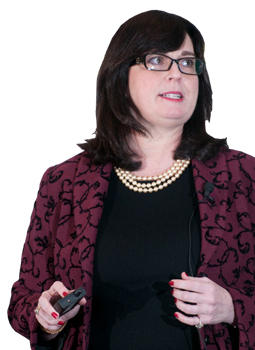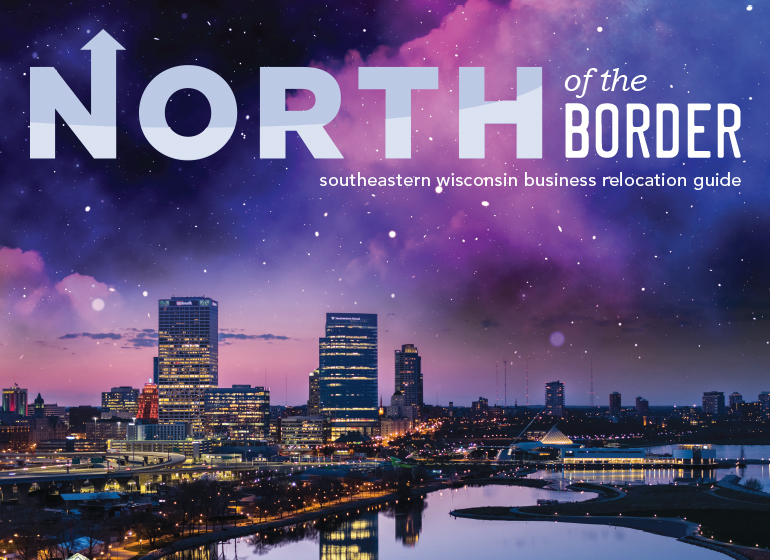It used to be that driving along I-94 from Cook County, Illinois, to Wisconsin was a matter of not just miles but also mindset. They were different worlds.
While Chicago clearly remains the “big city” sister to Milwaukee, the two metro areas are increasingly growing together into one megaregion, connected by the I-94 corridor lined with booming development and business parks in Lake County on the Illinois side of the state line and areas like Pleasant Prairie on the Wisconsin side of the line.

A business move from the Chicago area to southeastern Wisconsin is no longer considered a huge cultural shift. If a business with national clientele and national brand recognition relocates from northern Illinois to southeastern Wisconsin, that distance of between 15 and 50 miles rarely affects its operations, says Kelly O’Brien, president and chief executive officer of the Chicago-based regional economic competitiveness organization Alliance for Regional Development. After all, there are just as many – if not more – miles between Wisconsin communities Brookfield and Mount Pleasant, or Oak Creek and Waukesha, with workers commuting within those zones already.
“Milwaukee is really going through a renaissance with the amazing restaurants, craft beer and the freshwater sector,” O’Brien said. “It should no longer be the stepchild of Chicago. Milwaukee’s got to get over the idea that they’re lesser than because they’re not Chicago.”
More and more, Wisconsin companies – when chatting with colleagues or contacts in Asia or Europe – proclaim their location to be in the Chicago area.
Turns out, this is not just a gimmicky line. There is real truth to the matter. The Alliance for Regional Development seeks to build upon the idea that Chicago, Milwaukee and northwest Indiana are now one economic megaregion.
“Milwaukee does not have the name recognition abroad so we usually end up saying, ‘We’re from Chicago,’” said John Gurda, a Milwaukee historian and author. “What I’ve compared it to is like ‘sleeping with an elephant,’ former Canadian Prime Minister Pierre Trudeau’s line for Canada with the U.S. We’ll forever be overshadowed by Chicago.”
Similarly, O’Brien often hears Milwaukee-area businesspeople say they are “an hour outside of Chicago” when in touch with Asian businesses.
“Why not use that (description) nationally? You’re catching on to the fact that proximity to Chicago is a benefit,” she said.
O’Brien’s goal is to eventually rid the ages-old rivalry between Wisconsin and Chicago. She’d like to see a newly named economic region with “no brick walls” on state lines.
“We really have more in common than we do differences,” she said. “We look for areas where it really does make sense to collaborate, like transportation.”
After all, in a 2012 report authored by the Organisation for Economic Co-operation and Development, 21 counties in Wisconsin, Chicago and Northwest Indiana are characterized as operating as an economic region and collectively are the third-largest contributor to U.S. Gross Domestic Product. But the downside is that between 1990 and 2010, the region grew at a slower pace than the national average. This translates to 6,000 jobs lost.
“I know for a fact we are still not growing at the national average,” O’Brien said.

Some of this is due to population loss; all three states have suffered declines.
As a follow-up to the report, and with an eye on maximizing that GDP while attracting companies, Alliance for Regional Development was born.
It’s important to look at the region’s history to understand why Chicago has for many years been a sexier city in which to do business.
“They both had ports and for about 50 years, the cities were pretty much on an even basis,” Gurda said. “When railroads came to Chicago, it was a little like Milwaukee lost to the rivalry.”
“The two cities are peas of dissimilar size in the same regional pod,” he wrote in a Milwaukee Journal Sentinel column published in 2012, in advance of a daylong workshop at Marquette University exploring the relationship between the two cities. “Chicago and Milwaukee grew up as siblings, and they were locked in a fierce sibling rivalry for years.”
Remember that $1 million advertising campaign the Wisconsin Economic Development Corp. launched last year, aimed at luring millennials out of Chicago and into Wisconsin?
O’Brien thinks companies can do better by not shunning one state in favor of another.
“I thought we were trying to get away from moving chess pieces,” she said.
A goal is to convince companies to relocate to the region – not just move within it. O’Brien advocates “being thoughtful in addressing the population issues for the megaregion in a place-based branding campaign” by highlighting its assets.
“As the talent base grows, more companies will want to be here,” she said. “We need to take the bold steps of doing what we need to do to attract people to move to our megaregion and for current residents to feel proud of where they live.” ν


